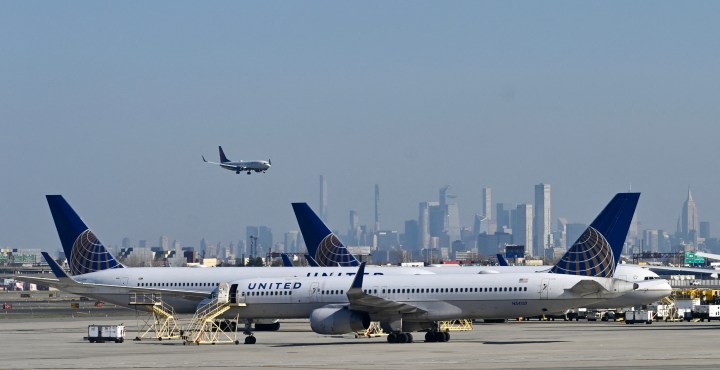
Report: Greener fuels are best path to cutting carbon out of air travel
Report: Greener fuels are best path to cutting carbon out of air travel

President Joe Biden has set a goal of getting the U.S. economy to net zero greenhouse gas emissions by 2050. That, of course, would require huge changes across all sorts of industries — including transportation, the sector responsible for the largest share of emissions, almost 30%.
There’s been a ton of focus on decarbonizing cars, and a lot of movement on that front. But, so far, it’s been harder to get there with airplanes.
The best way to do that, in the next few decades, is with sustainable aviation fuels, according to a new report from the Rhodium Group.
To get aviation to net zero by 2050, though, the U.S. would need to produce about 35 billion gallons of sustainable aviation fuels annually by then. So far, it’s only producing 4.5 million.
Planes are tricky to decarbonize — a lot trickier than trains and automobiles.
Melissa Lott at Columbia’s Center on Global Energy Policy said the industry is still very much in the early stages.
“We’ve figured out what types of options we have, whether it’s electrifying planes, replacing their fuels or offsetting emissions, but we’ve only just started actually using those solutions,” she said.
The most realistic and effective option in the short to medium term is replacing conventional jet fuel with something greener.
Kristin Brandt at Washington State University said that basically means fuel made from some kind of waste.
“You can use municipal solid waste, you can use forest residues, you can use agricultural residues, you can capture carbon from the air,” she said.
These fuels burn a lot cleaner, Brandt said. And they can just be dropped into existing planes.
Megersa Abate at the World Bank said that’s a big part of the appeal for airlines, which have spent billions of dollars buying planes.
“Because you don’t want to strand all these multibillion assets that you have,” he said. “So you want to continue using them. Most of them have 20, 30 years life span.”
With these newer, sustainable fuels, airlines can continue to use the planes they already own. No big retrofits required.
But one of the challenges, Abate said, is that sustainable aviation fuel is 3 to 5 times more expensive.
“In addition to that, its availability is very limited as well,” he said.
In most countries, Abate said, it’s not available at all. And even in places where it is, like the U.S., not much is being produced. So far it makes up just 0.1% of all the airplane fuel currently used.
There’s a lot happening in the world. Through it all, Marketplace is here for you.
You rely on Marketplace to break down the world’s events and tell you how it affects you in a fact-based, approachable way. We rely on your financial support to keep making that possible.
Your donation today powers the independent journalism that you rely on. For just $5/month, you can help sustain Marketplace so we can keep reporting on the things that matter to you.

















